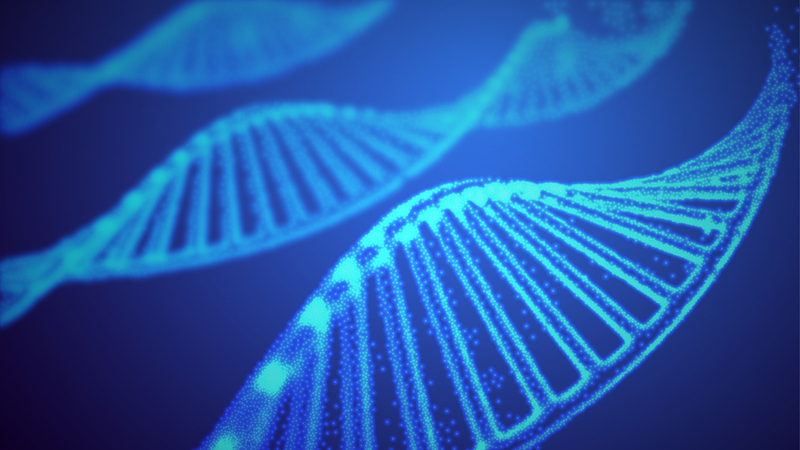Best CRISPR Gene Editing Practices and Why Researchers Should Apply Caution
Branded Content by Cosmic Press
Clustered regularly interspaced short palindromic repeats — CRISPR — gene editing has proven a successful method for successfully editing DNA in human, plant, virus, and bacteria cells. The method is particularly popular for its simplicity, efficiency, ability to target several genes at once, and simple customization of target DNA. However, there are some limitations to CRISPR, especially ethical issues surrounding gene editing on human embryos. Plus, CRISPR techniques can affect regions of DNA outside the target. Therefore, it’s essential that researchers develop the technique and continuously evaluate its efficacy.
Many researchers and scientists refer to BioTechniques to keep up with developments and best practices in CRISPR gene editing. The leading life sciences journal publishes a wealth of insights into the best CRISPR practices and why researchers should apply caution to ensure their gene editing practices are as responsible and safe as possible.
Here, we’ll explore the three best CRISPR practices from BioTechniques, the risks that can arise from this gene editing technique, the importance of applying caution, and what the future is likely to hold for CRISPR.
Three CRISPR Gene Editing Practices From BioTechniques
Researchers can follow a variety of practices to ensure high standards while carrying out CRISPR gene editing. These are three of the top practices that BioTechniques recommends.
1. Select the best CRISPR technology for the research question. There are many CRISPR methods available for cell lines in different medical and scientific fields, and some systems are better suited to particular cell and tissue types than others.
2. Use the software and technologies that best support CRISPR techniques. Researchers can choose from a multitude of technologies for CRISPR gene editing, and each piece of software offers different advantages and is more appropriate for certain types of cells.
3. Uphold ethical decisions when applying CRISPR techniques. Researchers must comply with regulations to ensure good ethical practice, which is especially important when conducting research that involves human embryos. Although regulations usually ban this kind of research, studies involving human subjects may be considered ethical where the benefits of CRISPR outweigh the drawbacks. In such studies, researchers must uphold safety and transparency and meet all legal requirements.
Why Researchers Must Apply Caution to CRISPR Gene Editing
As challenges can arise from CRISPR, researchers must apply caution throughout the gene editing process. These challenges are usually associated with efficacy, ethical practices, and unexpected mutations.
1. Measuring CRISPR Gene Editing Efficacy
The tools required to measure the efficacy of CRISPR can be costly and therefore aren’t always available to scientists. Because of this, historically, scientists usually only measured the efficiency of CRISPR in the places where they created edits. But scientists now often need to interrogate an entire genome, which requires modern tools and often generates a huge amount of data for analysis.
2. Upholding Ethical Practices
Many scientists hold opposing views on CRISPR’s ethical use, especially when it comes to whether we should edit human embryos. That said, many individuals are willing to accept research that involves CRISPR experiments on human embryos if there is a pressing medical need to do so. For example, there is an argument that scientists should undertake research involving CRISPR gene editing on human embryos if the research findings could lead to developments in diagnoses and treatments for genetic disorders that currently have few testing and treatment options.
However, CRISPR can’t always overcome problems in gene editing, and its effects vary based on the mutation. As a result, the process can be unpredictable and, while there is evidence that CRISPR is safe in some applications, researchers haven’t collated much advanced research that demonstrates the process is safe for human embryos.
BioTechniques ran a survey to collect a group of researchers’ opinions on the ethical use of CRISPR. This survey revealed that 63% of respondents agreed with the concept of experimenting on human embryos that won’t be brought to term, 55% agreed with the concept of preventing serious genetic disorders in human embryos that will be brought to term, 9% agreed with the concept of enhancing traits (with no medical need for these edits) in human embryos that will be brought to term, and 18% disagreed with CRISPR practices altogether.
3. Unexpected Mutations
If researchers don’t modify DNA correctly or if DNA undergoes unexpected mutations, CRISPR gene editing can be unreliable. Although scientists have studied unwanted alterations, they haven’t yet unpicked the full consequences of how the mutations play out in different organisms. Different studies contradict each other: Some report adverse effects of CRISPR/Cas9 that are associated with pronounced on-target structural variants and off-target mutations, and others disagree with this.
Scientists saw an example of unexpected mutations in a study at Uppsala University and SciLifeLab’s National Genomics Infrastructure (2022). The researchers involved in the study examined the genomes of over 1,000 zebrafish from two generations and concluded that the CRISPR/Cas9 method can inadvertently produce unanticipated mutations in DNA and that subsequent generations can inherit these mutations. Mutations occurred in the wrong genomic locations, and some instances reported DNA fragments that were bigger than expected and were undergoing changes. Overall, structural variations caused by insertions and deletions led to 6% of outcomes in founder larvae across both generations.
As a result, the researchers emphasized the need for scrupulous validation and careful consideration when deciding whether to use CRISPR/Cas9 for medical purposes. In the healthcare industry, scientists are already developing counteractive processes for genes that are associated with certain tissues and cell types. While these treatments don’t pose a risk of intergenerational aberration, researchers should take note of the need for caution that these findings highlight.
The Future of CRISPR Gene Editing
Scientists may not yet have fully optimized the efficiency and safety of CRISPR, but they have made major progress in CRISPR gene editing techniques. Today, researchers can apply advanced technologies to determine the efficacy of a CRISPR technique and find any faults in the method. Modern algorithms make CRISPR gene editing more time-efficient and help researchers find and edit proteins, thereby improving efficiency. As a result, it’s now easier than ever before to identify and edit genes that affect protein expressions.
Given that CRISPR is one of the fastest-moving fields of technology, the gene editing technique has quickly become a solution in many applications. This is largely because CRISPR is both an editing tool and a detection tool. In future, as CRISPR progresses, we can expect to see scientists use the gene editing technique to determine whether a patient has a specific virus and make rapid diagnoses; carry out advanced screening processes that interrogate genomes to identify genetic changes; and target obesity, leukemia, and heart disease. Scientists may also team CRISPR technologies with other technologies to advance precision editing.
On top of this, CRISPR could prove pivotal to the agriculture and plant production industry. With CRISPR, manufacturers may be able to produce healthier food products, and farmers may be able to breed higher proportions of female chickens and cattle. This would reduce the number of male animals who are slaughtered at birth because they aren’t needed for eggs and milk.
Life Science Journals Offer Latest Methods
The open-access, peer-reviewed journal BioTechniques publishes the latest information on laboratory methods and instrumentation for researchers and scientists who specialize in the life sciences and other related disciplines. Not only do these readers use the journal to keep their professional knowledge up to date on topics like CRISPR gene editing, western blotting, chromatography, next-generation sequencing, and polymerase chain reaction, but they can also visit BioTechniques’ multimedia website to access interviews, articles, webinars, videos, podcasts, and eBooks, not to mention contribute to discussions with a growing research community from all over the world.
BioTechniques is one of the 34 journals that Future Science Group publishes. Each of the Group’s journals, which include titles like Future Oncology, Regenerative Medicine, and Nanomedicine, publish quality insights that progress research, development, and clinical practice and improve communication among professionals from a plethora of medical and scientific industries.
Branded content furnished by our promotional partners. The Daily Sundial editorial staff is not involved in its production. Content does not reflect the views or opinions of the editorial staff.










